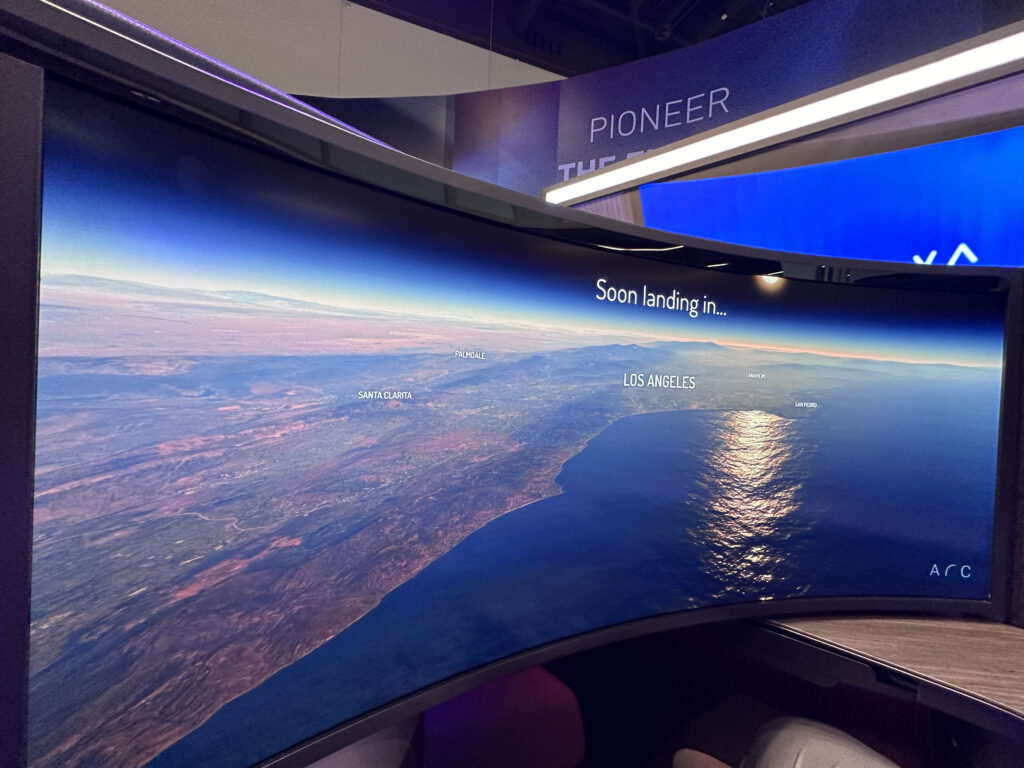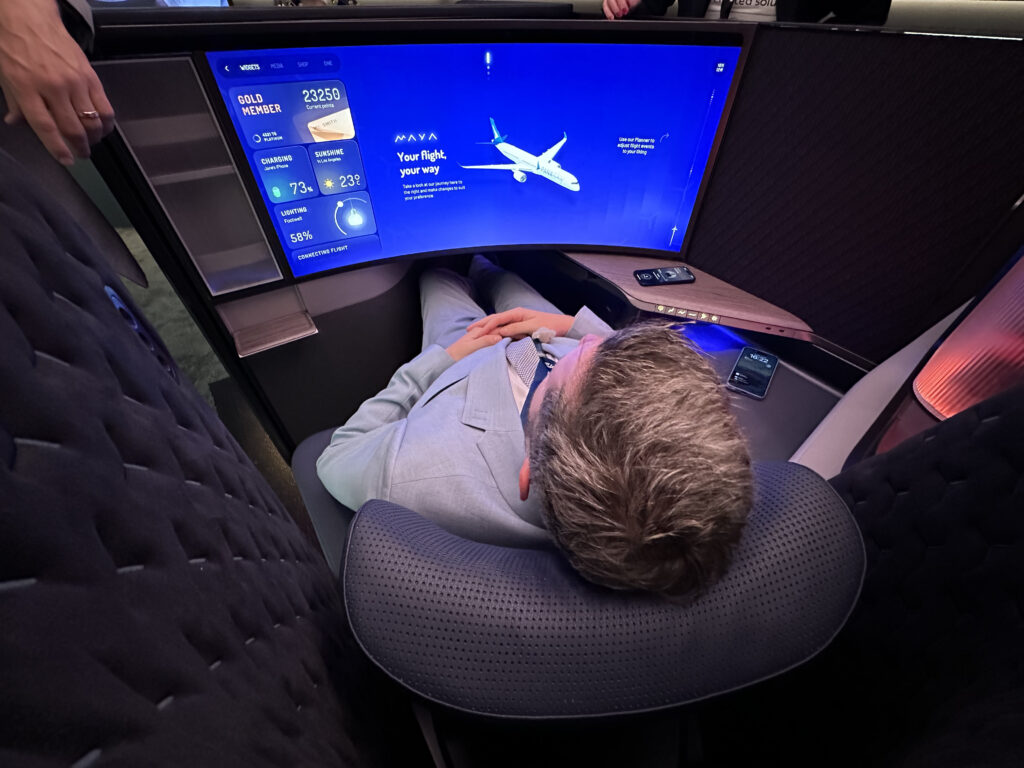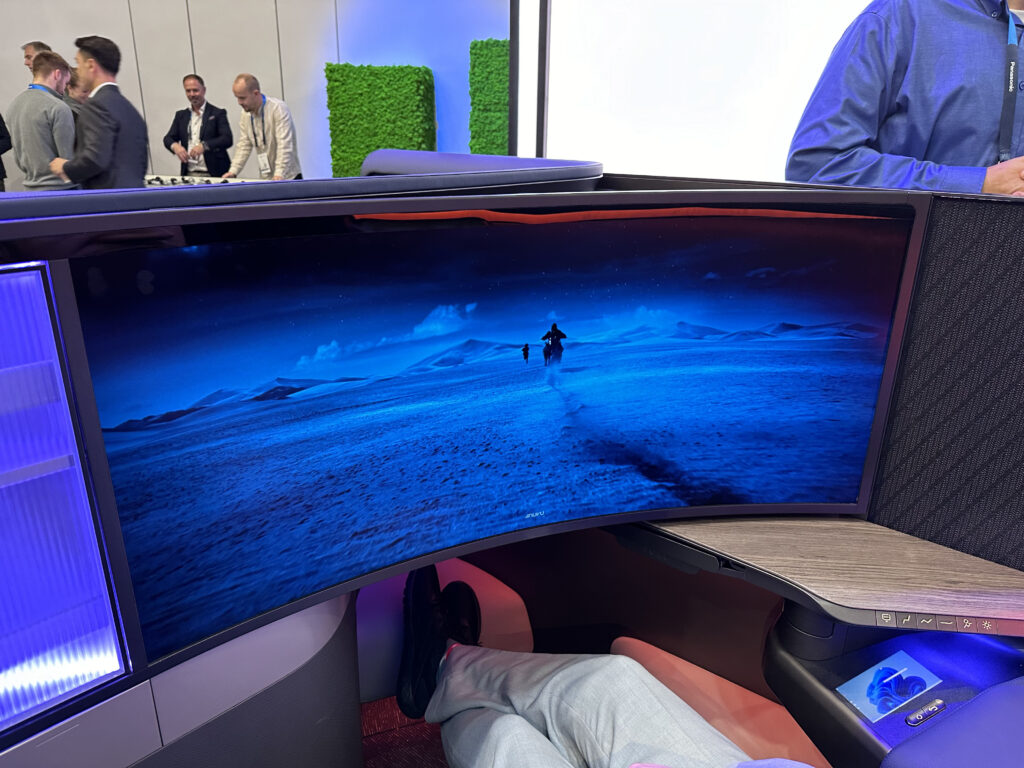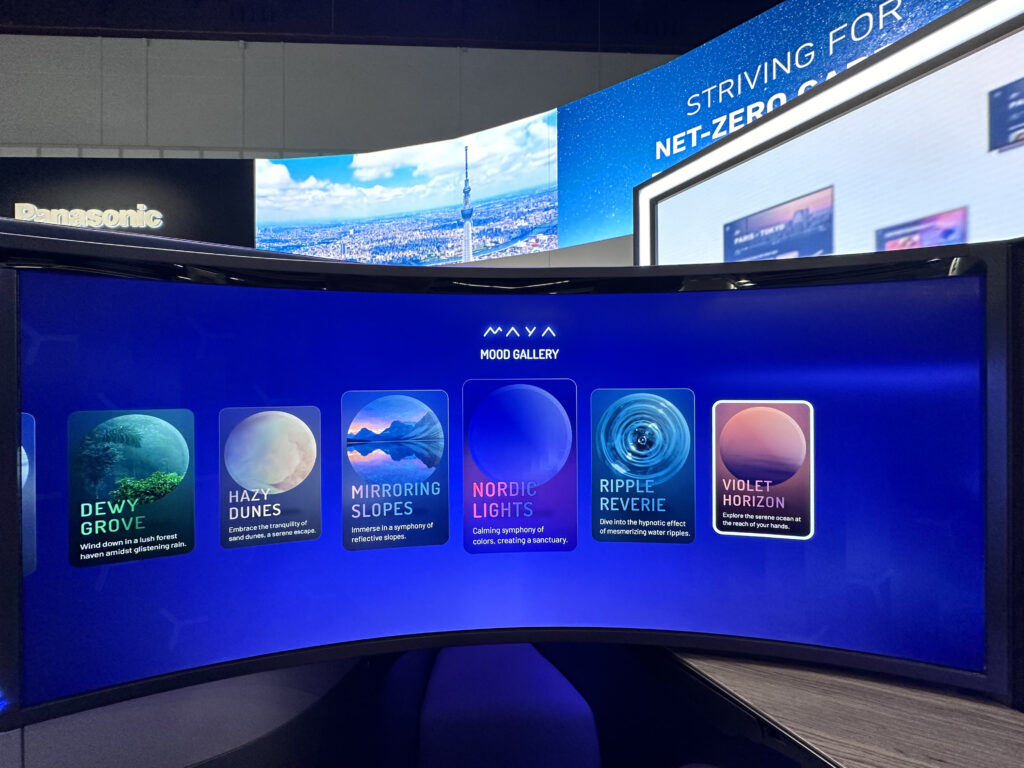HAMBURG — One of the showstoppers of the Aircraft Interiors Expo this year was MAYA, a concept business seat designed by Collins Aerospace and Panasonic Avionics, which fits an updated Collins Elements outward-facing herringbone with a gargantuan 45” curved ultra-wide OLED screen.
Yes, there are some additional bells and whistles (cushion pressure tech, headrest speakers, embedded thermoplastic trackpads). And, in a praiseworthy move, the suite uses recycled, reusable and plant-based materials along with Collins’ Crystal Cabin Award-winning STARLight™ composite structures.
But the big question is: what does such an enormous monitor do for the inflight experience?
Within the RGN team, we have strong — even conflicting — views about MAYA and what it means for the future of business class, and our John Walton and Fintan Horan-Stear bring you theirs.
John Walton:
It’s a reality that inflight entertainment systems are the second part of the modern #PaxEx Juvenal’s “bread and circuses”, placating passengers and distracting them from discomfort, especially in economy.
But in business class, it’s different: the IFE experience is often less immersive than in economy, simply because of the different screen-size-to-distance proportions. No more, if airlines plump for the MAYA concept from Panasonic Avionics and Collins Aerospace.
In short: MAYA dominates the space and the experience. It’s amazing.

In widescreen mode, the view is simply stunning. Image: John Walton
Even with the rather tinny, non-noise-cancelled headrest speakers, the Furiosa trailer was absolutely immersive.
 I imagine that with good noise-cancelling headphones, plus potentially some bass rumble built into the seat, this would be an experience even better than many movie theatres. The wow factor for blockbusters is incredible.
I imagine that with good noise-cancelling headphones, plus potentially some bass rumble built into the seat, this would be an experience even better than many movie theatres. The wow factor for blockbusters is incredible.
I have questions, of course, about what happens when I want to watch something else, let alone do something else.
What happens to this ultra-widescreen CinemaScope 21:9 display if I’m watching The Golden Girls? Is the 4:3 just pillarboxed, with enormous black sections? How does low-res content (still the vast majority of what’s onboard) look on this incredible screen? Is there a mode that seamlessly surrounds the 4:3, weaving design in?
Can I bring in some of the widgets from the main screen, like a Press For Champagne button or the flight map — sort of second-screening but with one massive screen? In the age of people realising that reducing distractions can feel pretty great, do I even want to do that?

As you might expect, there are plans to customise and personalise the entire system. Image: John Walton
Fintan Horan-Stear:
Airline seats are multi-use spaces. They need to keep someone in comfort for up to 18 hours as they travel across the world. Passengers eat there, sleep there, work there and entertain themselves while they travel, and the seat has to work for all of these modes.
Whilst having an enormous wraparound screen is great for watching the latest blockbuster, what happens when you don’t want to watch anything at all? It feels like the entire space could become about the entertainment rather than a well-rounded travel experience.
Panasonic may offer the best background views of uncanny valley rainforests and audio soundscapes when MAYA is not in cinema mode, but if I want to sit back and truly relax, I don’t want to be distracted by anything blinking or swirling in my eyeline, and certainly not when I am trying to sleep.
In its current guise, MAYA doesn’t ever truly switch off, meaning that passengers will always be confronted with some form of artificial light even at times of rest.
Ultimately, MAYA is an impressive concept that brings the maximum immersion to cinematic entertainment in business class, and offers notable personalisation.
However, it also feels like a compromise of the other essential elements of the flight experience.
A system that can retreat into the background as much as steal the spotlight would create a multi-use space where passengers can choose to go to the movies or not — and would certainly negate the need for eyeshades.
Related Articles:
- Boeing Perch welcome space asks big questions about big OLED screens
- Thales takes IFE innovation to the edge with edge-caching and cloud
- Onboard with Safran’s Euphony in-headrest speaker system
- Op-Ed: The perils and promise of personalized IFE
- JetBlue designs Blueprint for sensibly personal IFE experience
- Anuvu SVP Estibaliz Asiain on content trends driving IFE
- AERQ presents new use cases for OLED screens in the cabin
- Press Release: Collins Aerospace and Panasonic Avionics unveil MAYA
Featured image credited to John Walton















